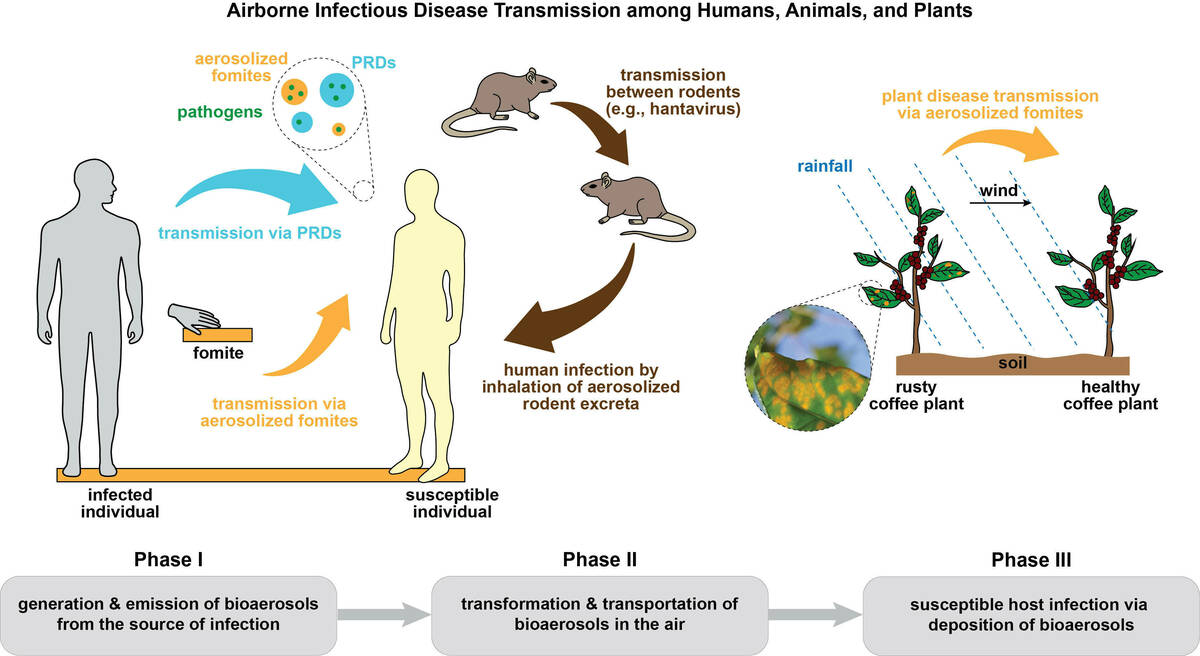The alarming frequency of epidemics and pandemics of infectious diseases among humans in the past two decades, coupled with the persisting threat of plant disease outbreaks to the global food supply and safety, urges comprehensive research on the dynamics of disease transmission. Bioaerosols are commonly believed to spread a variety of pathogens in the air. However, efficient control of the 'airborne' disease transmission has been hindered by the significant knowledge gap surrounding the dynamics of generation and emission of bioaerosols from the source of infection, their transformation and transportation in the air, and their final deposition on the susceptible sites of infection. The Asadi Research Group integrates the principles of transport phenomena, soft matter rheology, bioaerosol science, and microbiology to bridge the fundamental gaps between engineering and health. We specifically aim to tackle various challenges in the field of infectious disease transmission and develop medical technologies to address them via a combination of experimental and theoretical approaches. The experimental tools we use include, but are not limited to: microfluidics, rheometry, aerosol emission monitoring, human experiments, animal models, high-speed imaging, interferometric Mie imaging, particle image velocimetry, and infectivity assays.
